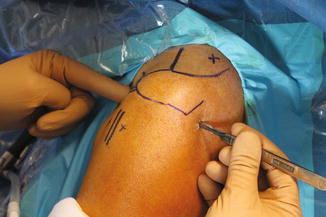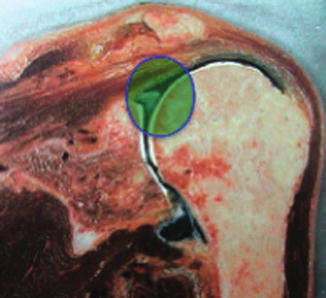(1)
Générale de Santé Hopital privé de, l’Estuaire, Le Havre, France
1.1 Avoiding Steam
Everything is fine if there is no steam; what to do when it appears and what to do to prevent it?
It is always difficult to eliminate steam.
The steam is caused by the condensation of moisture laden air onto a cold lens.
At sea and in the mountain when fog sets in, things start to go wrong.
A first step is to let air reach the camera inside the cover. For this, we must hold it by the end and leave a “breathing” space (Fig. 1.1).
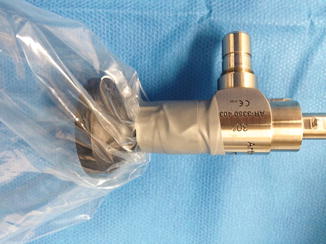

Fig. 1.1
We can also help patients to reheat by creating a stream of hot air inside the cover.
If this is not enough and we had planned to place a compress inside the cover, we can remove the camera and wipe it. Sometimes it is necessary to change the scope and the cover (Fig. 1.2).
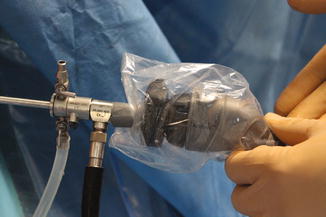
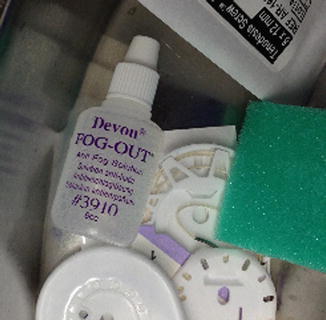

Fig. 1.2

Fig. 1.3
In general, it is too late and even anti-steam products are ineffective (Fig. 1.3).
It must be as small as possible, because the steam comes from the water which is discharged via the posterior approach (Fig. 1.7).
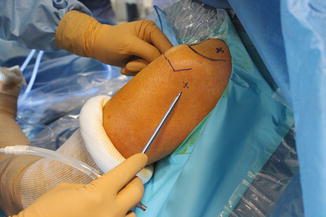

Fig. 1.5
The incision is made with a sharp scalpel, less than 5 mm, and the passage of subcutaneous tissue must be performed by rubbing hard with the sharp mandrel. Finally, particular attention should be given to the scope cover sealing by carefully sticking the tape astride (Fig. 1.6).
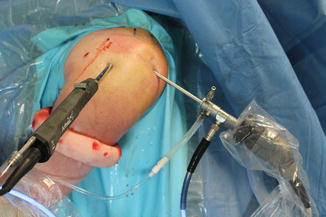

Fig. 1.6
1.2 Properly Entering the Shoulder
It is sometimes difficult to enter the shoulder, without making cartilage lesions.
Sometimes it is not easy to penetrate the shoulder. This is a stressful moment; like an artist, you can’t miss your entry.
To enter the capsule, you must decoapt the shoulder but also provide internal rotation; in this way, we stretch the posterior capsule which facilitates the entry of the mandrel (Fig. 1.7).
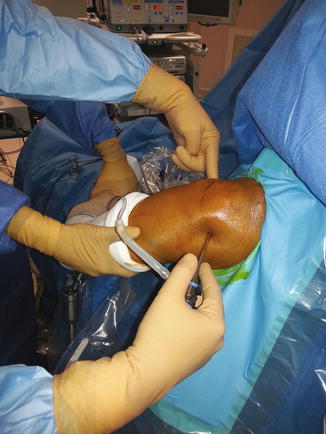

Fig. 1.7
Moreover, we must aim for the upper section of the articular interline. In this wider area, there is less chance of injuring the cartilage; this is the safety zone (Fig. 1.8).

